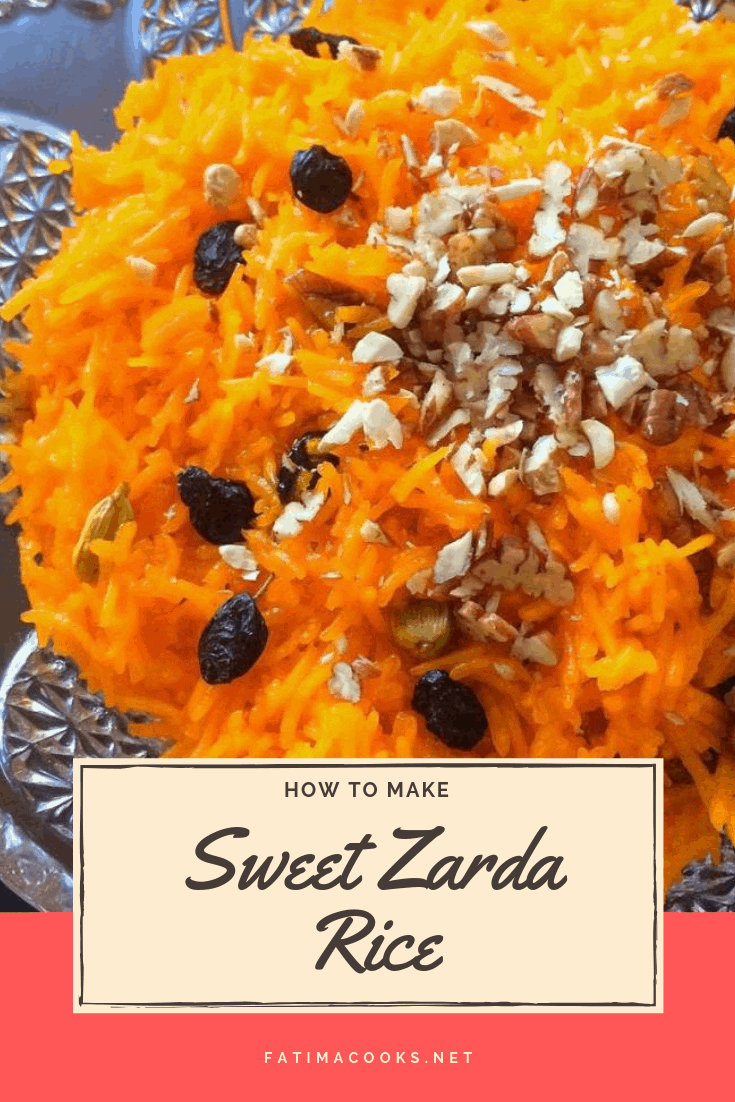The colours, the speckling of nuts and jewel-coloured raisins, the texture. And I haven’t even yet talked about just how satisfying a plate of warm Zarda is after a spicy meal. Or eaten alongside a hot biryani or pilau - iykyk 😉. Traditionally served on special and happy occasions such as weddings and Eid, I made this particular batch to celebrate landing my first official job!
What is Zarda?
Zarda is a traditional Pakistani sweet dish made with rice, sugar, nuts and cardamom seeds. The name Zarda comes from the Urdu word ‘Zard’, which means yellow - this is why Zarda is often a very bright hue of yellow or orange!.
How do you make Zarda?
The recipe I’ve seen the women in my family use is very long and complicated, some involving boiling the rice separately and making a ‘chashni’, a sugar syrup infused with the cardamom and food colouring to pour over the plain rice separately. I feel like those steps are unnecessary, make no difference to the flavour of the Zarda and just means more dirty dishes to wash later when you could be enjoying your divine Zarda. My recipe is as simple as it gets - I’m ALL about keeping things simple when I can. This uncomplicated process, yet high ROI on flavour and satisfaction is exactly why this is one of my go-to desserts. Zarda, you are SO kind to me.
What makes a good Zarda?
In my opinion, the best Zarda is one where each grain of rice is long, separate and firm with no evidence of mush or overly softened rice, all whilst being coated in the sparkling syrupy goodness of the sugar. Finished off with a confetti of candied nuts and raisins laced in each bite, this becomes a festival of flavours and textures in your mouth! To get this texture of the rice, it’s best to use either extra long-grain basmati rice. If you struggle with cooking basmati rice, sella rice is your best friend - it’s very difficult to mess up sella as it doesn’t mush or overcook easily.
Do I need to use food colouring in Zarda?
Some people may be hesitant to use food colouring in Zarda. You definitely don’t need to use powdered food colouring as instructed in this recipes. Alternatives to food colouring include:
Saffron (soak a teaspoon or so of saffron threads in water and use this to carefully stir into the rice). This will result in a very faint dye unless you use a lot of saffron, so I would advise you to just sprinkle the saffron water onto the top of the rice so some of the rice grains become yellow. You can use any alternate natural food colouring product you may have - it will work absolutely fine. Add this at the same time you are boiling the rice. In all honesty, you don’t need to add any colour if you don’t want to! It’ll still taste the same 🙂
How is Zarda served?
As a dessert, Zarda is served just as it is - sprinkled with nuts and dried fruit as a garnishing. It can be served alongside a cup of herbal tea or regular tea. You can also garnish it with khoya, various mithai, even clotted cream. It’s also best served warm. In some households, it’s a thing to serve Zarda alongside a Biryani or a Pilau. I can attest to how delicious sweet Zarda is when mixed with a spicy and meaty Biryani - it’s a sweet and spicy flavour party and seriously, you can’t knock it until you try it! Enjoy, with love x
📋 Recipe
Enter your email & I’ll send it right over. Plus, you’ll get bonus Pakistani food-goodness from Fatima Cooks, like new recipe alerts, exclusive email-only recipes + more! By submitting this form, you consent to receive emails from me. Your details are secure. Opt-out any time.









